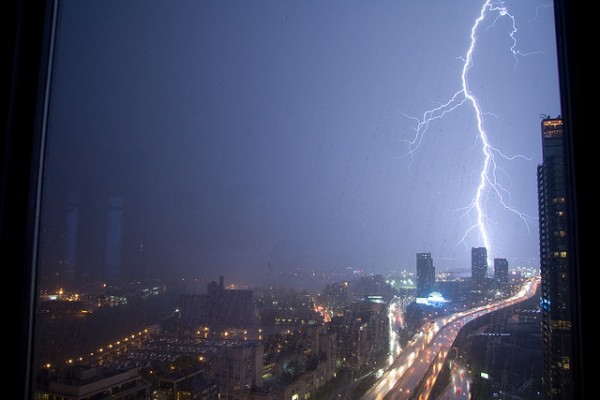Expect these ugly personal attacks to continue, as Ms Davis
threatens the good old boys running the state of Texas.

A week ago, Texas Democratic gubernatorial candidate Wendy Davis
announced that she outraised Texas Attorney General Greg Abbott, her
likely repugican opponent. Davis brought in more than $12.2 million
from July through December, while Abbott raised $11.5 million during the
same period.
Immediately following this bad news for repugicans, an article taking apart Wendy Davis’ bio appeared in the
Dallas Morning News.
It seems that in trying to relate to the people (as her policies do),
Ms Davis has failed to share the good luck she’s also had, and even
though The repugicans don’t relate to the people and their policies harm
them, they’re quite gleeful that Ms Davis didn’t spend quite as much
time in a trailer between the ages of 19-21 as she led you to believe,
because this will somehow change the fact that her policies are
pro-individual freedom and pro-98% of the people.
Apparently, when she was 19, Wendy Davis wasn’t a divorced working
single mother living in a mobile home. Yes, contrary to her own words,
the actual divorce didn’t come until she was 21 and she only lived in
the trailer for a short time. Then she lived with her mother and then
she got her own place. She was still a single mother, but as you know,
this is not difficult at all at the age of 21.
At 24, she married Jeff Davis, a lawyer who the Dallas Morning News
says “helped pay for her two years of college” and even cashed in his
401(K) and took loans out to help finance her Harvard degree (while they
were married). This, we are told by the DMN, will lead to people
questioning how much of her success was her own doing: “Some will
question how much of her success was her own doing, and how bad her
circumstances were to start.”
OH MY GAWD. Wendy Davis is a sinner who expected family resources to
be spent on her career. And if she wasn’t in that trailer from age 19,
and wasn’t perfectly, neatly divorced by then (as all divorces go
apparently), then she is a liar who never really struggled.
See, things weren’t hard for Wendy, even though she grew up helping
to support her single mother, and was later a single mother working two
jobs while living in an apartment, because she got married at 24 and
this man “paid” for her degree (much like a woman works to put her
husband through medical school, and this is championed as supporting her
man). Never mind that she contributed to the finances after she
graduated, as she explained to the DMN, “I was a vibrant part of
contributing to our family finances from the time I graduated to the
time we separated in 2003.”
Martial assets are used to support all members of a family unit, and
because everyone contributes (even if it is to work for the future, and
therefor can’t be counted in dollars, like the man going to medical
school), we don’t say that so-and-so paid for x like a prostitute or
accuse them of stealing said education.
But the wingnuts are now acting as if Wendy Davis stole those pink tennis
shoes too, because she apparently stole this Harvard education from
this poor man.
If this article and their reaction to it is repugicans’ idea of
helping themselves, they are more clueless than previously determined.
As the daughter of a single working mom, I found the original article to
be unintentionally condescending, reeking of privilege while attacking
someone over poverty cred, and cluelessly patriarchal in its attitude
toward joint resources and career women. Very 1950s. I found the sly
references to her child bearing history very telling. I was expecting
the scarlet letter for Ms. Davis for having had two children with two
different men, though naturally this is expected if one is a man (then you are allowed to abandon your first family, in search of the perfect photo op).
The author
wrote of Ms. Davis’ second husband:
He paid for her last two years at Texas christian
University and her time at Harvard Law School, and kept their two
daughters while she was in Boston
If Ms. Davis were a man who went to Harvard, no one would be writing
that the woman “kept” their daughters while he was at Harvard. Where
else were they to go but stay at home? Pet boarding? Was it somehow not
hard for Ms Davis to be a single mother because when she wasn’t anymore,
her husband “kept” the children while she was at school? Or are we just
to get what an “ambitious” sinner Ms Davis is for abandoning her
family. Check.
Judging from the rather vicious attacks trending against Wendy Davis
this morning on Twitter stemming from the DMN article, we are reminded
that conservatives view working women with contempt. Ben Shapiro of
Breitbart was appalled that Ms Davis wasn’t willing to tank a career
just because she had children.
Obviously same standards do not apply to men, DUH – they are not
expected to chuck career when they have children because they are
naturally designed to make money, but if woman dares to rely on this
money, she is a very bad person who is stealing from man.
John Nolte of Breitbart can’t understand why Wendy Davis not spending
quite as much time in a trailer as she said is not the exact same thing
as Chris Christie putting lives at risk by shutting down lanes on a
bridge over a personal vendetta, and he curses you liberal media:
The Daily Caller asked, “Who is the real Wendy Davis?
http://ow.ly/sLdrI” Because fundamentally, struggling for 10 years
instead of 12 is just a completely different animal, and if the folks at
Daily Caller know anything, it’s the struggle of the single mother. Oh,
I kid. We all know that single mothers are ruining America (thanks
Mitt!).
The wingnut twitterati thinks Ms Davis probably stole those
tennis sneakers, if her ex didn’t pay for them (woman as kept object
even when she has a career is so appealing!):
• Sean Agnew @seanagnew: “I wouldnt be surprised if her ex husband
paid for them. RT @Neal_Dewing: I wouldn’t be surprised if Wendy Davis
stole those sneakers.”
There were the usual references to “Abortion Barbie” as well, because
it’s much better to deny food to children once they are born, and then
shame their single mothers over the exact number of hours spent in a
trailer than it is to support a woman’s right to make her own medical
decisions. Clearly women get pregnant on their own and should pay for
it.
Also outrageous to the right is the fact that Mr. Davis got custody
of the youngest child and Ms Davis paid child support (she notes of her
own volition). Wait, what? What is outrageous about this scenario?
Aren’t these the same people who cheered deadbeat dad and tea party hero Joe Walsh (former r-IL) as he told Sandra Fluke to get a job?
Paying child support is the act of a responsible adult. Or is the real point that Ms Davis is a super bad
woman
because she did not have custody of the youngest child? Yes, that is
the point of the attack. Women are naturally supposed to take care of
the children for free, not entitled to any joint resources to further
their prospects, and if they do not take care of the children, they are
suspect at best. Even if they pay child support, they are no good, while
men who balk at paying child support (hi, Newt Gingrich) can run for President.
If I were a repugican, I’d be outraged that wingnuts are attacking Ms. Davis’ children.
But the real point here, the thing that should be discussed, is that
being a single mother is hard whether you are in a trailer or not. Being
a single parent is tough work. Sometimes a person is operating as a
single parent even though they are technically still married. Sometimes a
spouse is unreliable, or the parents are separated.
Newsflash: Living in an apartment doesn’t magically make being a
single parent easy and the only people who would present it thusly are
people who are clueless about what it takes to be a responsible parent.
They are the people who think children are a woman’s job and that a man
“keeps” the children
for her, if she dares to study at Harvard.
(Mr. Davis seems like a great father, and this is wonderful to see but
it should be normal, not worthy of right wing Sainthood — though I can
see with their leaders’ histories why they would find it so unusual for a
man to be an active parent.)
Even more relevant than how tough things were or were not for
19-year-old Ms Davis is whether or not her policies today support others
who are going through tough times.
They do.
For Ms. Davis’ part, she has vowed to be more precise in her
language, which is as it should be. But forgive me if I am more appalled
by the vicious attacks from a party that pretends it’s Pro life and
then removes social safety nets from single parents and demonizes single
mothers and women in general, leaving vulnerable children to starve.
Expect these ugly personal attacks to continue, as Ms Davis threatens
the good old boys running the state of Texas. They will cluelessly
focus on all aspects of Ms Davis’ womanhood. She will be branded with a
big scarlet “W” for working while being a mom. Next up, how many hours
did she really spend wiping bums? Was it 340 hours like she said, or 240
because she was off at Harvard while her husband “kept” the children?
Update 5:08 PM est: Wendy Davis releases a statement and a bio
of her early years that show many of the original accusations,
including the not living as a single mother at 19, to be inaccurate.






















 Cosmic 'web' seen for first time
Cosmic 'web' seen for first time



